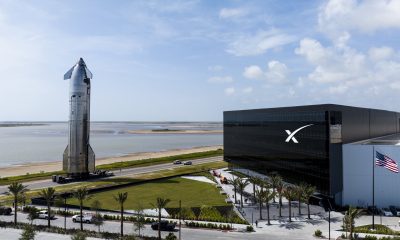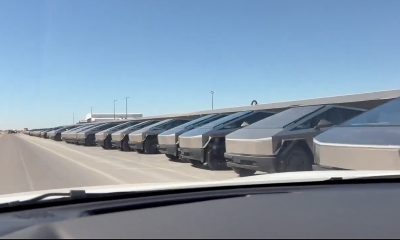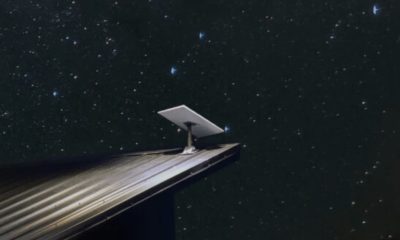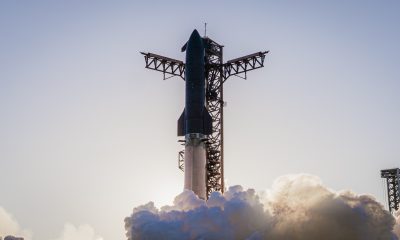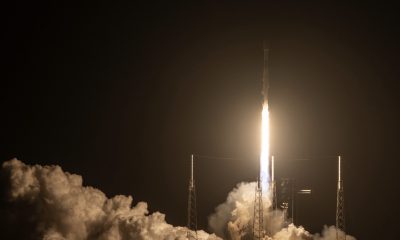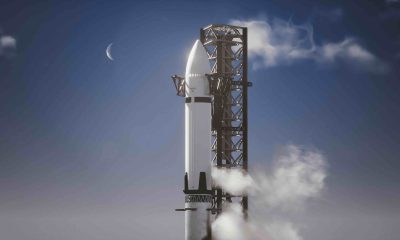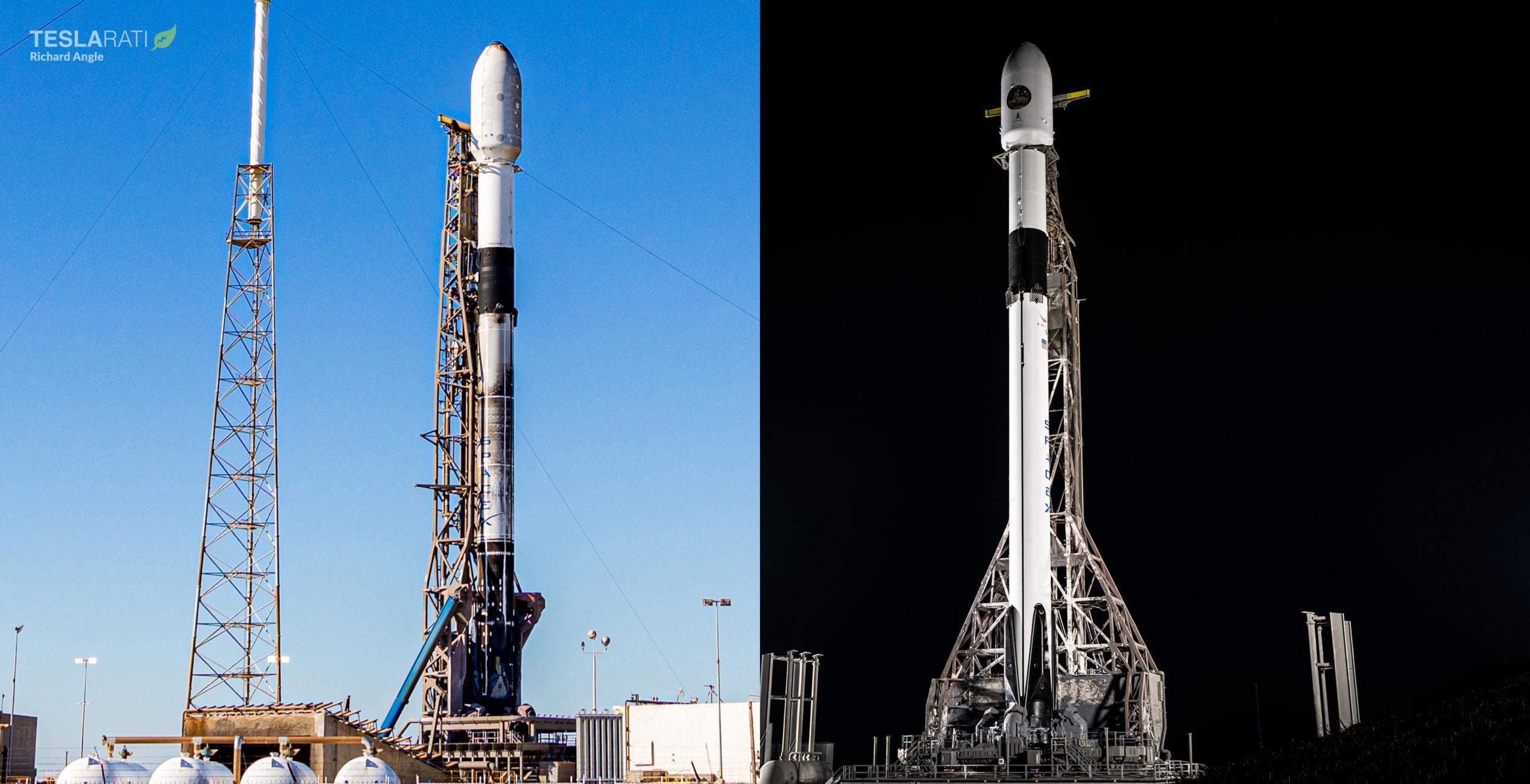
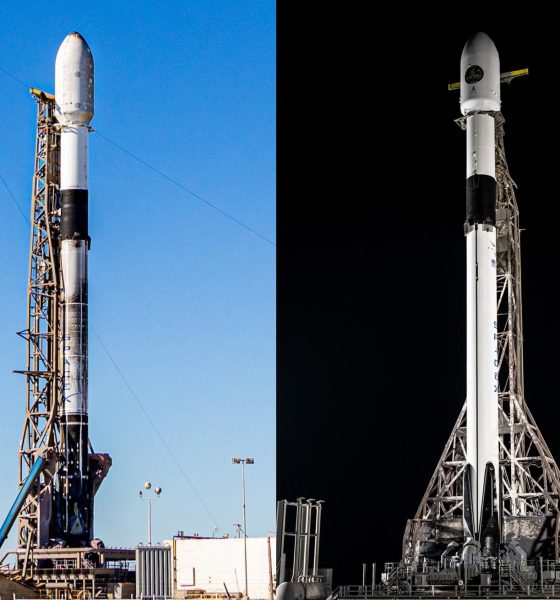
News
SpaceX to close out February with Starlink launches on Monday and Friday [updated]
Update: SpaceX has delayed Starlink 4-8 from February 20th to no earlier than (NET) 9:44 am EST (14:44 UTC), Monday, February 21st in the hopes of better “recovery weather.” The mission will be Falcon 9 booster B1058’s 11th launch overall and second launch in less than 40 days.
Up next, Starlink 4-11 – SpaceX’s second West Coast launch this year – is now firmly scheduled to lift off around 7:30-8 am PST (15:30-16:00 UTC) on Friday, February 25th from Vandenberg Space Force Base (VSFB). Finally, launch photographer Ben Cooper reports that a third Starlink mission – likely Starlink 4-9 – is scheduled to launch from Kennedy Space Center Pad 39A as soon as March 3rd. SpaceX has at least one more Starlink mission and a private astronaut launch tentatively scheduled for March.
Continuing the company’s busiest planned year yet, SpaceX has dispatched a drone ship for the first of two more Falcon 9 Starlink launches scheduled before the end of the month.
While there were signs a few weeks ago that SpaceX had as many as four Starlink launches planned this month, that appears to have shrunk to three. In theory, SpaceX could have finished refurbishing both of its East Coast launch pads – LC-40 and LC-39A – earlier this week after supporting launches on January 31st and February 3rd. SpaceX may be taking an extra week to better understand a space weather anomaly that recently destroyed more than three-dozen Starlink satellites, to conduct deeper pad maintenance, to refurbish well-worn Falcon rockets, or to simply give its launch workforce a bit of respite but either way, the company’s next Falcon 9 launch appears to be scheduled no earlier than (NET) 9:54 am EST (14:54 UTC), Sunday, February 20th.
Drone ship A Shortfall Of Gravitas (ASOG) departed Port Canaveral on February 16th and is headed about 636 kilometers (395 mi) downrange to support Starlink 4-8’s Falcon 9 booster landing. The mission will be the new drone ship’s fourth consecutive recovery – an unintentional situation that was forced upon it when drone ship Just Read The Instructions (JRTI) suffered damage during SpaceX’s last booster recovery of 2021. On top of almost sliding off the deck, Falcon 9 booster B1069 suffered significant damage to most or all of its nine Merlin 1D engines when JRTI’s ‘Octagrabber’ robot effectively dropped the booster on its head during recovery operations.
Only through the heroics of the human recovery crew was B1069 able to be secured to drone ship JRTI’s deck and returned to dry land in (more or less) one piece. Based on new aerial images from local photographer Julia Bergeron, it appears that JRTI did require deck repairs after the ordeal. Equally importantly, the ship’s Octagrabber robot – which took the brunt of B1069’s fall – appears to have been fully repaired and was being tested on deck as of February 15th. Oddly, though drone ship ASOG has done an excellent job filling in, SpaceX has yet to have a fully nominal booster recovery since B1069’s anomaly.
With any luck, that will end later this month and the company’s three Octagrabbers will restart routine recovery operations. Following Starlink 4-8’s launch from Cape Canaveral, SpaceX has plans for at least one more Starlink mission – this time from the West Coast. SpaceX last launched from its Vandenberg SLC-4E pad on February 2nd and set a record turnaround time of 24 days late last year, implying that the Starlink mission is likely scheduled within the last few days of February.
If successful, SpaceX will have launched eight times in the first two months of 2022 and 13 times in the last three months, demonstrating a cadence of up to 48-52 launches per year if the company can sustain the pace. SpaceX’s official goal for 2022 is 52 Falcon launches.

News
Tesla owners propose interesting theory about Apple CarPlay and EV tax credit
“100%. It’s needed for sales because for many prospective buyers, CarPlay is a nonnegotiable must-have. If they knew how good the Tesla UI is, they wouldn’t think they need CarPlay,” one owner said.
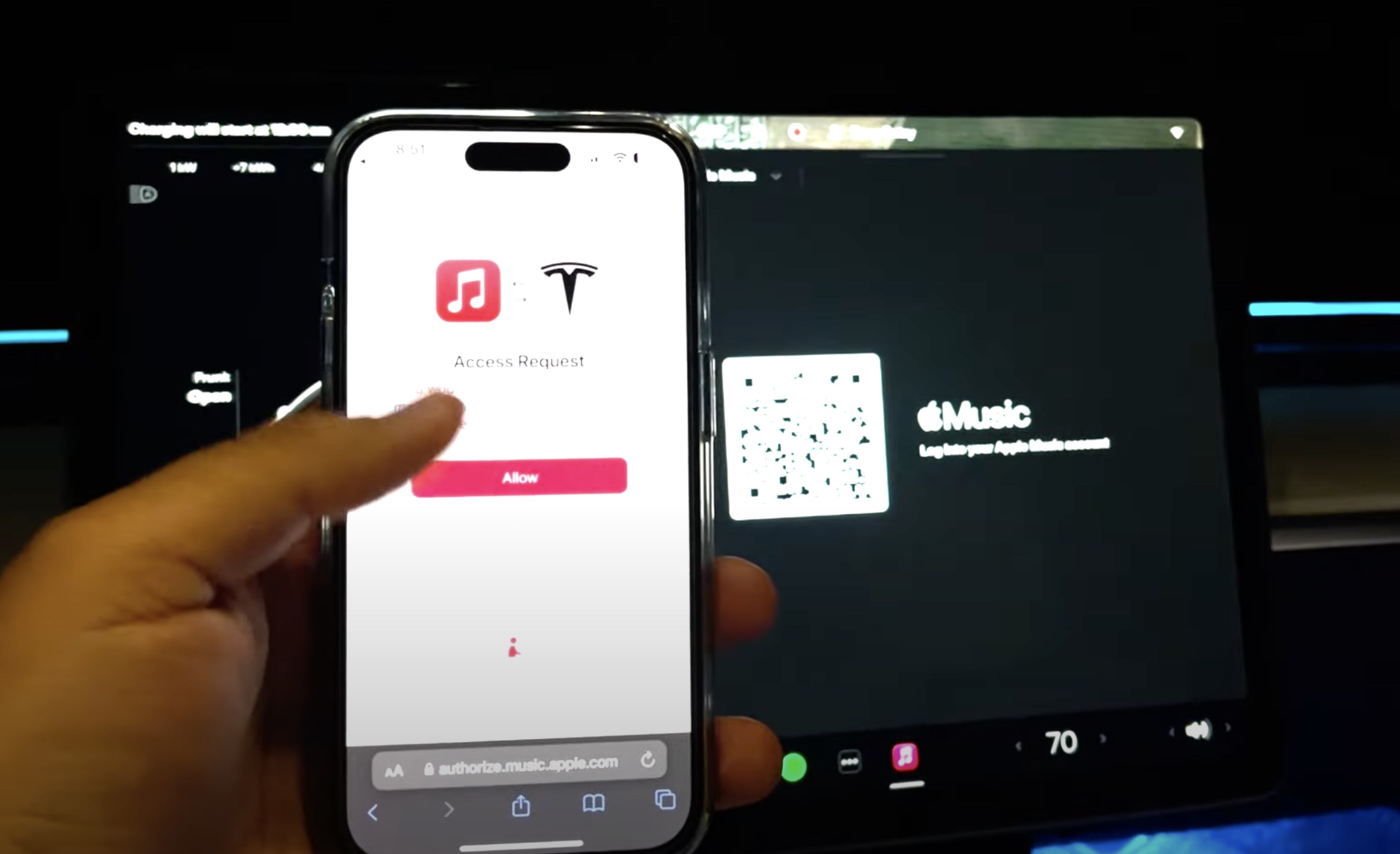
Tesla is reportedly bracing for the integration of Apple’s well-known iOS automotive platform, CarPlay, into its vehicles after the company had avoided it for years.
However, now that it’s here, owners are more than clear that they do not want it, and they have their theories about why it’s on its way. Some believe it might have to do with the EV tax credit, or rather, the loss of it.
Owners are more interested in why Tesla is doing this now, especially considering that so many have been outspoken about the fact that they would not use it in favor of the company’s user interface (UI), which is extremely well done.
After Bloomberg reported that Tesla was working on Apple CarPlay integration, the reactions immediately started pouring in. From my perspective, having used both Apple CarPlay in two previous vehicles and going to Tesla’s in-house UI in my Model Y, both platforms definitely have their advantages.
However, Tesla’s UI just works with its vehicles, as it is intuitive and well-engineered for its cars specifically. Apple CarPlay was always good, but it was buggy at times, which could be attributed to the vehicle and not the software, and not as user-friendly, but that is subjective.
Nevertheless, upon the release of Bloomberg’s report, people immediately challenged the need for it:
Everyone thinks they need it. I would think that too if I didn’t know how good Tesla’s interface was. CarPlay is a crappy layer on top of crappy info-navs, and people think it’s an imperative because it provides a level of consistency from car to car. They have no clue how much…
— Rich Stafford (@r26174_rich) November 14, 2025
How can it not be when the best engineers choose Tesla over Apple and Tesla’s core focus is auto vs Apple being mobile. It’s what Tesla does every day. It’s a side project for Apple. Still Apple is much better than any other auto OEM who attract lesser talent and make digital…
— Emu (@confessedemu) November 14, 2025
Some fans proposed an interesting point: What if Tesla is using CarPlay as a counter to losing the $7,500 EV tax credit? Perhaps it is an interesting way to attract customers who have not owned a Tesla before but are more interested in having a vehicle equipped with CarPlay?
“100%. It’s needed for sales because for many prospective buyers, CarPlay is a nonnegotiable must-have. If they knew how good the Tesla UI is, they wouldn’t think they need CarPlay,” one owner said.
Tesla has made a handful of moves to attract people to its cars after losing the tax credit. This could be a small but potentially mighty strategy that will pull some carbuyers to Tesla, especially now that the Apple CarPlay box is checked.
@teslarati :rotating_light: This is why you need to use off-peak rates at Tesla Superchargers! #tesla #evcharging #fyp ♬ Blue Moon – Muspace Lofi
Investor's Corner
Ron Baron states Tesla and SpaceX are lifetime investments
Baron, one of Tesla’s longest-standing bulls, reiterated that his personal stake in the company remains fully intact even as volatility pressures the broader market.
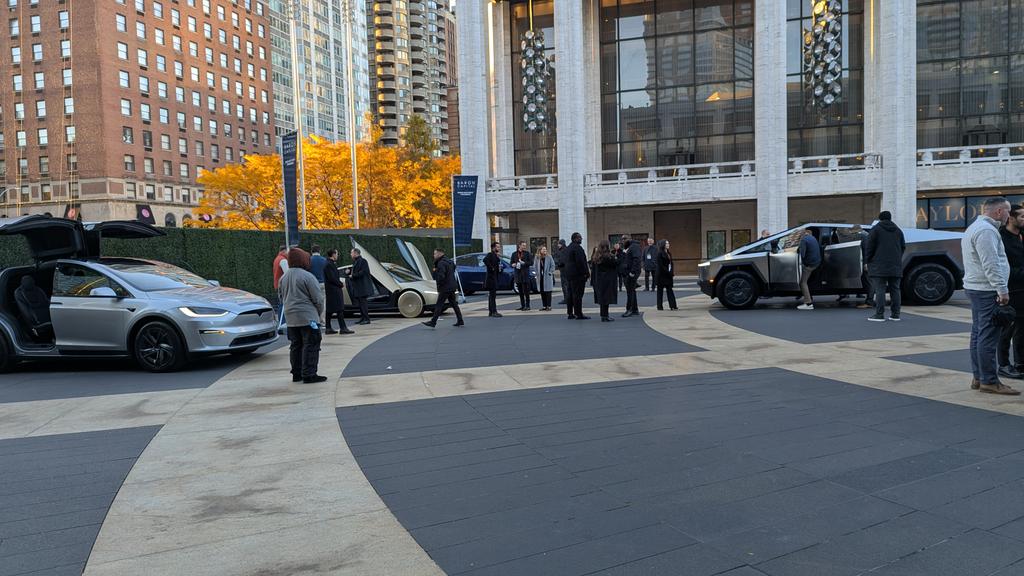
Billionaire investor Ron Baron says he isn’t touching a single share of his personal Tesla holdings despite the recent selloff in the tech sector. Baron, one of Tesla’s longest-standing bulls, reiterated that his personal stake in the company remains fully intact even as volatility pressures the broader market.
Baron doubles down on Tesla
Speaking on CNBC’s Squawk Box, Baron stated that he is largely unfazed by the market downturn, describing his approach during the selloff as simply “looking” for opportunities. He emphasized that Tesla remains the centerpiece of his long-term strategy, recalling that although Baron Funds once sold 30% of its Tesla position due to client pressure, he personally refused to trim any of his personal holdings.
“We sold 30% for clients. I did not sell personally a single share,” he said. Baron’s exposure highlighted this stance, stating that roughly 40% of his personal net worth is invested in Tesla alone. The legendary investor stated that he has already made about $8 billion from Tesla from an investment of $400 million when he started, and believes that figure could rise fivefold over the next decade as the company scales its technology, manufacturing, and autonomy roadmap.
A lifelong investment
Baron’s commitment extends beyond Tesla. He stated that he also holds about 25% of his personal wealth in SpaceX and another 35% in Baron mutual funds, creating a highly concentrated portfolio built around Elon Musk–led companies. During the interview, Baron revisited a decades-old promise he made to his fund’s board when he sought approval to invest in publicly traded companies.
“I told the board, ‘If you let me invest a certain amount of money, then I will promise that I won’t sell any of my stock. I will be the last person out of the stock,’” he said. “I will not sell a single share of my shares until my clients sold 100% of their shares. … And I don’t expect to sell in my lifetime Tesla or SpaceX.”
Watch Ron Baron’s CNBC interview below.
News
Tesla CEO Elon Musk responds to Waymo’s 2,500-fleet milestone
While Tesla’s Robotaxi network is not yet on Waymo’s scale, Elon Musk has announced a number of aggressive targets for the service.

Elon Musk reacted sharply to Waymo’s latest milestone after the autonomous driving company revealed its fleet had grown to 2,500 robotaxis across five major U.S. regions.
As per Musk, the milestone is notable, but the numbers could still be improved.
“Rookie numbers”
Waymo disclosed that its current robotaxi fleet includes 1,000 vehicles in the San Francisco Bay Area, 700 in Los Angeles, 500 in Phoenix, 200 in Austin, and 100 in Atlanta, bringing the total to 2,500 units.
When industry watcher Sawyer Merritt shared the numbers on X, Musk replied with a two-word jab: “Rookie numbers,” he wrote in a post on X, highlighting Tesla’s intention to challenge and overtake Waymo’s scale with its own Robotaxi fleet.
While Tesla’s Robotaxi network is not yet on Waymo’s scale, Elon Musk has announced a number of aggressive targets for the service. During the third quarter earnings call, he confirmed that the company expects to remove safety drivers from large parts of Austin by year-end, marking the biggest operational step forward for Tesla’s autonomous program to date.
Tesla targets major Robotaxi expansions
Tesla’s Robotaxi pilot remains in its early phases, but Musk recently revealed that major deployments are coming soon. During his appearance on the All-In podcast, Musk said Tesla is pushing to scale its autonomous fleet to 1,000 cars in the Bay Area and 500 cars in Austin by the end of the year.
“We’re scaling up the number of cars to, what happens if you have a thousand cars? Probably we’ll have a thousand cars or more in the Bay Area by the end of this year, probably 500 or more in the greater Austin area,” Musk said.
With just two months left in Q4 2025, Tesla’s autonomous driving teams will face a compressed timeline to hit those targets. Musk, however, has maintained that Robotaxi growth is central to Tesla’s valuation and long-term competitiveness.
-
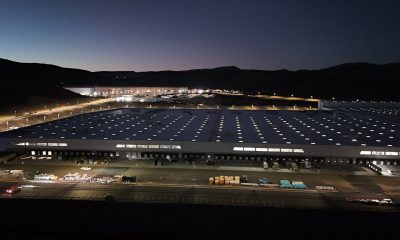
 News7 days ago
News7 days agoTesla shares rare peek at Semi factory’s interior
-

 Elon Musk1 week ago
Elon Musk1 week agoTesla says texting and driving capability is coming ‘in a month or two’
-
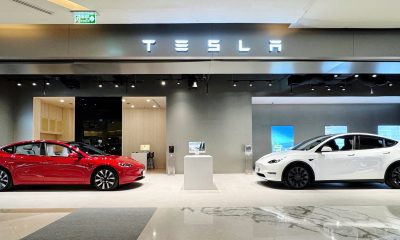
 News6 days ago
News6 days agoTesla makes online ordering even easier
-
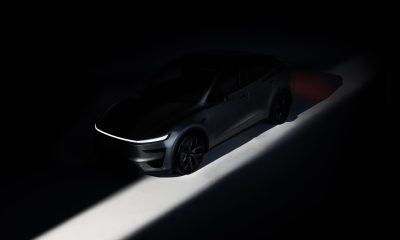
 News6 days ago
News6 days agoTesla Model Y Performance set for new market entrance in Q1
-
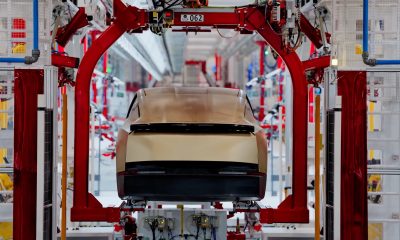
 News1 week ago
News1 week agoTesla Cybercab production starts Q2 2026, Elon Musk confirms
-
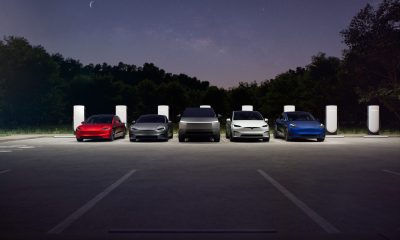
 News5 days ago
News5 days agoTesla is launching a crazy new Rental program with cheap daily rates
-

 News1 week ago
News1 week agoTesla China expecting full FSD approval in Q1 2026: Elon Musk
-
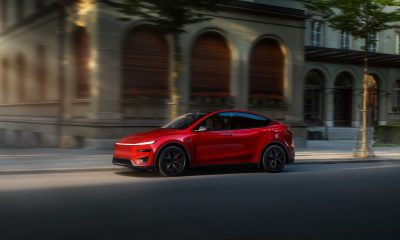
 News1 week ago
News1 week agoTesla Model Y Performance is rapidly moving toward customer deliveries
